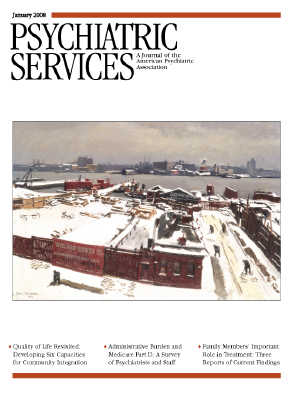ArticlesFull Access
Published Online:1 Jan 2008
- Cited by
- 1 May 2023 | Academic Psychiatry, Vol. 47, No. 5
- Beth Han,
M.D., Ph.D. , - Joseph C. Gfroerer,
B.A. , - Lisa J. Colpe,
Ph.D. , - Peggy R. Barker,
M.P.H. , and - James D. Colliver,
Ph.D.
1 March 2011 | Psychiatric Services, Vol. 62, No. 3- Beth Han,
- 1 May 2010 | Annals of Pharmacotherapy, Vol. 44, No. 5
- 13 January 2015 | Psychiatric Services, Vol. 60, No. 5
- 1 May 2008 | Psychiatric Services, Vol. 59, No. 5
Metrics
History
Published online 1 January 2008
Published in print 1 January 2008



